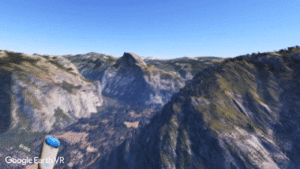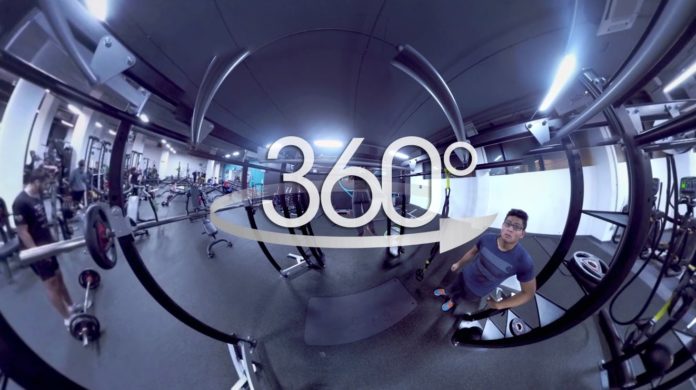You know your stuff. You have trained hundreds of people and made their fitness dreams come true. You have been studying health and fitness for as long as you can remember. It’s your life. It’s your passion. And it’s your livelihood.
So how do you build your own personal brand and get more offline and online clients? One of the best ways is to get yourself out there as a thought leader, influencer, and subject matter expert. It’s a powerful marketing method that works! Unfortunately, there are also one million other trainers out there that are trying to do the same thing. Creating workout or nutrition videos takes a lot of time and these days it’s almost impossible to really be heard above all of the other noise.
That video you uploaded last week? It’s up to 37 views and you know at least 10 of them came from you and your mom.

Genius marketers avoid the fray by adopting the latest technology and trends before they become truly mainstream. If you embrace an open space, you have a much better chance of getting noticed and maintaining your lead before everybody else jumps in. The first mover advantage can be your friend, especially in the fitness industry which is usually slow to embrace new technology. Trainers and athletes are usually not as focused on bleeding edge technology as gamers, programmers, and tech bloggers.
But you are different and this is your chance.
Wouldn’t it have been great to be one of the first YouTube fitness channels back in 2006? Or have one of the first iPhone fitness apps back in 2009?
And that’s where 360 degree video comes in.
360 degree videos are easy for consumers to watch on Facebook, YouTube, and most other major platforms. You can watch the videos on your desktop computer screen or on your smartphone, even if you aren’t getting the full virtual reality experience.
Luckily, millions of consumers are getting mobile VR devices like the Samsung Gear, Google Cardboard, Google Daydream, and hundreds of others that are readily and inexpensively available. Higher net worth individuals (prime personal training clients with expendable income) may have an Oculus Rift, Playstation VR or HTC Vive headset that provides full VR and room-scale experiences attached to their PC or game console.
Take a trip to Hamilton Island in Beautiful 360
Every day more consumers become VR ready and more companies release VR devices that will make your 360 videos available to even more potential clients. And when they do get their first VR device, they will be searching for great 360 videos… just like the ones that you will be creating.
So here’s how to do it.
Creating Your First 360 Degree Video
Obviously, your current camera won’t cut it. You’ll need a specialized camera that can capture multiple angles and software to stitch it all together. The market is still new, so there aren’t a lot of options and some are quite pricey, but every month new cameras are announced and the costs are reduced.
Currently, there are low budget cameras that connect to your smartphone, mid-level cameras that give you files to upload to your PC, and super expensive cameras for filmmakers. The market changes so fast, this article would be out of date within a week, so your best bet is to use Google or Amazon to find the option that is best for your needs and budget.

Ricoh Theta S – Popular budget camera.
Once you have the camera, in most cases it really is as simple as putting it in a central location or connecting it to your selfie-stick and pressing record. If you aren’t livestreaming to Facebook or YouTube, you can easily edit the video just as you would with regular 2D video. Most cameras come with custom software to make it easy.
Don’t just create a video that could better be served by 2D video. 360 video is best for taking people to an exotic location or giving them a tour of a new and interesting place. If you just want to show them how to do a cable crunch, use 2D. If you want to lead them through a meditation session while at the top of a mountain overlooking the Pacific Ocean, use 360.

Nokia OZO – It’s only $45,000 so why not get two?
Also, remember that your audience could be looking anywhere at any time. This means you can’t count on them looking at what you are hoping they are looking at. For example, if you are demonstrating proper exercise form or leading a group exercise class, just realize that they could be facing the opposite direction and miss your demonstration. That’s part of what makes 360 exciting and immersive, but it would serve you well to prompt the user to look in your direction if that’s necessary.
Other tips:
- Set the camera at eye height so they feel like they are really there and not viewing at an awkward angle.
- Don’t put the camera too close to anything that the user should be looking at. At best, it becomes blurry on some devices, and at worst, can give your viewer a splitting headache.
- Some creators have found success with cameras that are moving around (while surfing, on a skateboard, etc.) but understand that this has a higher chance of disorienting the viewer.
How to Publish your 360 Fitness Video
Now that you’ve shot and edited your awesome fitness content and double checked that your abs looked great in that lighting, how can you get it out there? Luckily, there are many simple and free options.
YouTube
YouTube’s audience for 360 video is growing daily. Even better, YouTube’s team is working hard to increase their capabilities for delivering 360 immersive content to their users. They clearly believe that 360 is the future and they are working to make it as successful as possible for content creators like you.
Let’s go cliff jumping in Maui.
YouTube has created a simple guide to getting your content on their platform and you can find it here.
Facebook is the other 360 streaming behemoth and their users are clamoring for your content. Even without a 360 viewer, they can swipe around to watch your video while browsing their feed.
Facebook’s guide to 360 videos and livestreaming can be found right here.
Vimeo
Prefer a higher quality experience? Vimeo is there for you. It’s insanely simple to add your 360 video there. Just check this out.
Others
Most video platforms accept and deliver 360 videos and if they don’t now, they will soon. Apps are being released directly for Steam and Oculus where you can upload and share your videos. A more savvy user can watch the 360 videos that you embed directly onto your website or blog.
Better yet… upload it everywhere you can. Most platforms are free, so why not?
What’s Next?
Want to look even further ahead? Passive 360 video viewing is great, but interacting with an immersive environment is much better.
Soon you’ll be able to let the viewer choose their path on your tour or make decisions that change the story or environment. The blending of games and video will create experiences that the fitness world hasn’t seen before. Imagine changing the exercise class based on how the viewer is performing? Imagine bringing in multiple people into one experience so they can support each other during that last round of Tabata? Or taking a nutrition class underwater as you learn about each fish that you are preparing? It’s coming.
Photogrammetry will let your viewer move around the environment that you film instead of being stuck “inside the camera”. Augmented reality video can be overlaid on the table, kitchen counter, or open living room space in front of the viewer, bringing people and objects right into their home or office.

360 is just the beginning and you’re now a part of the revolution. Get out there, create helpful fitness content, and share your videos with us here at Virtual Reality Fitness Insider so we can showcase them as well. We can’t wait!












[…] to be one segment of technology that fitness enthusiasts haven’t really gravitated towards. Recently, we discussed how personal trainers can benefit from this innovation. We firmly believe that […]
I have to try this. Seems like the Ricoh Theta S would be a good first start. Thanks.